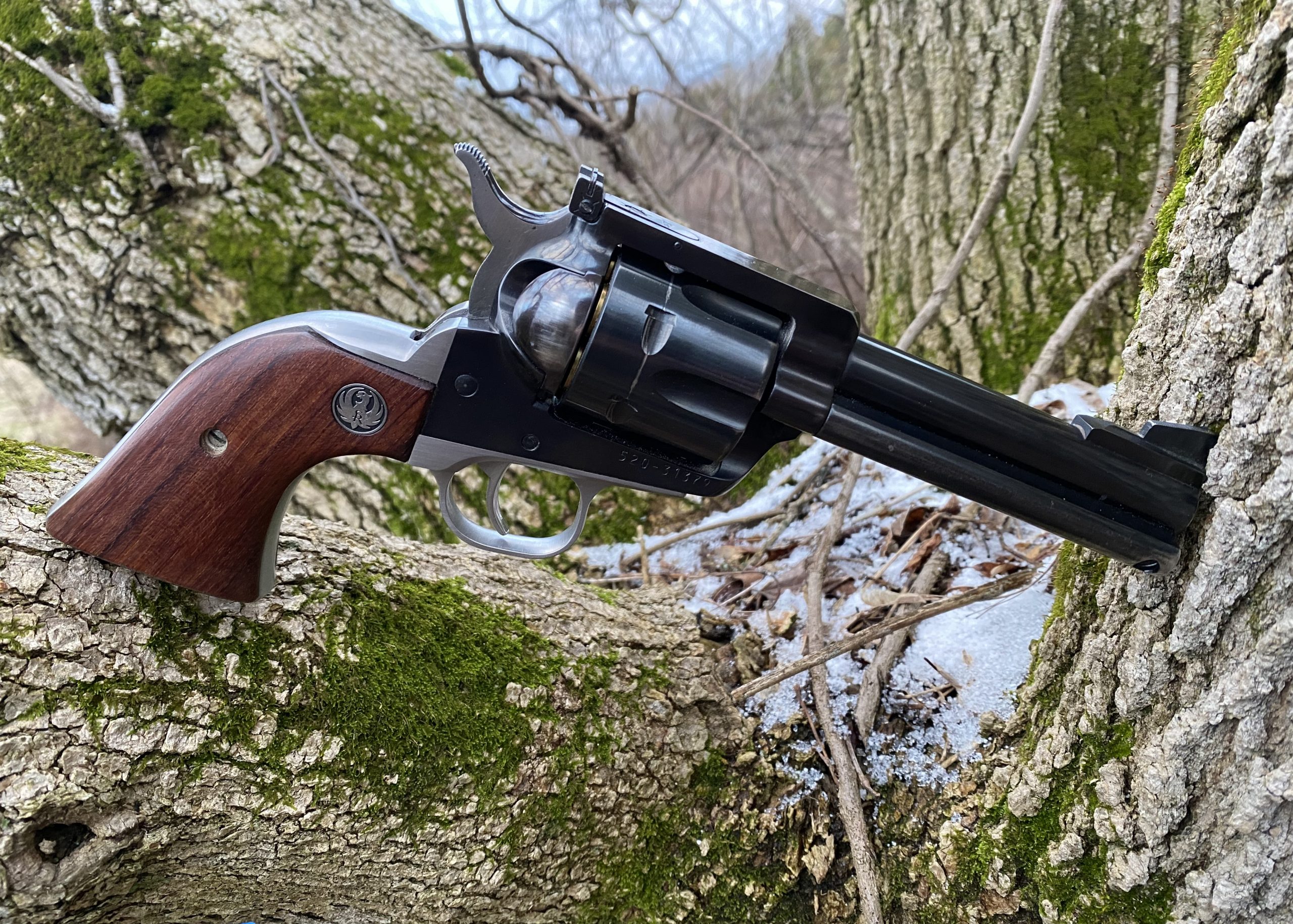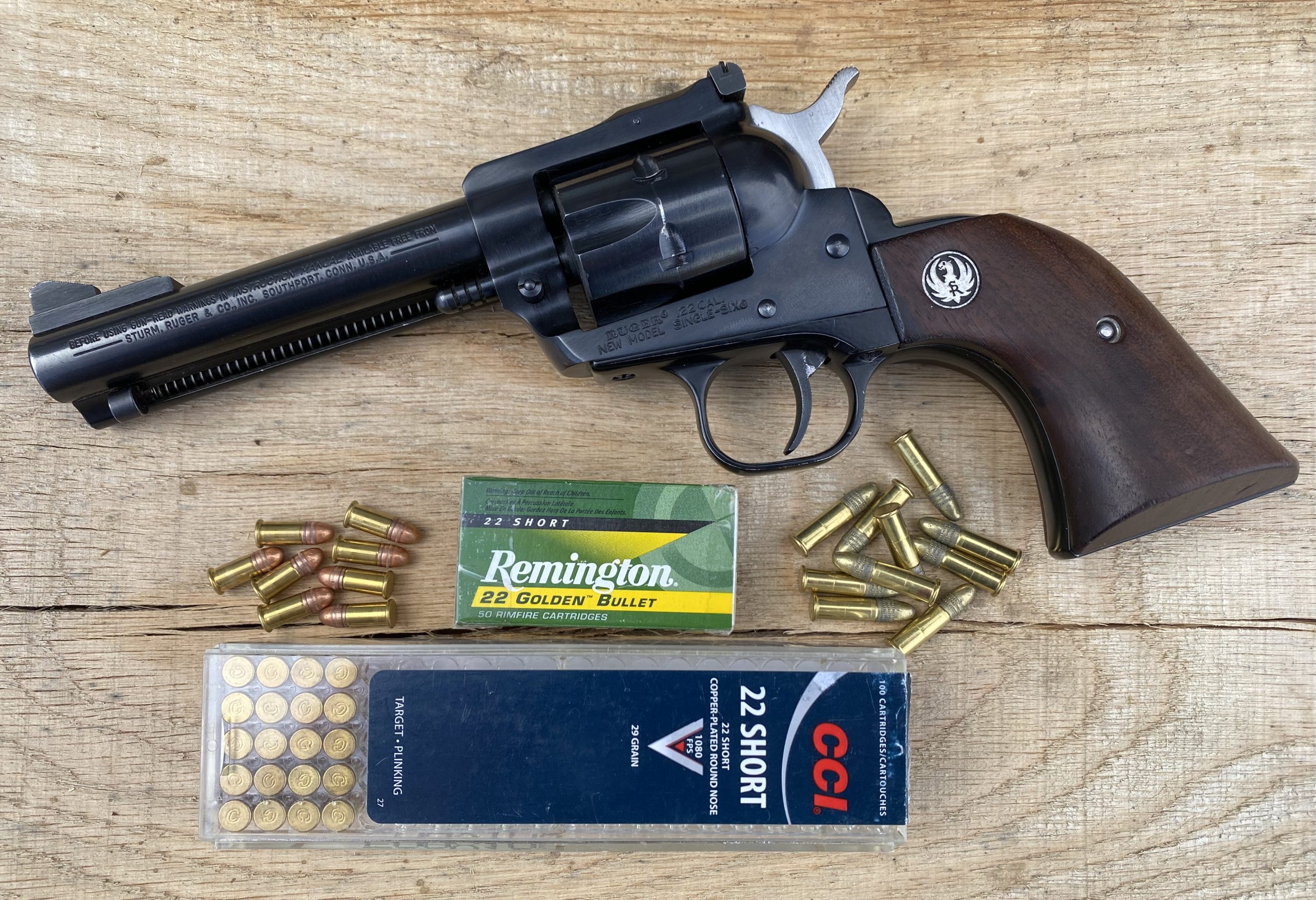I have a love for fine six shooters that stems back to my childhood days when I was allowed to shoot a Ruger Single Six at tin cans (under heavy supervision). I guess something about it gets in the blood, because as soon as I was able to buy and trade I promptly purchased a Ruger New Model Blackhawk in 357 Magnum. The trading bug had bit pretty hard, so I traded that gun off after only a few months, but it was a sign of things to come.
Over the years I’ve owned 3 Single Six revolvers in 22 LR, 3 Blackhawks in 357 Magnum, and a Super Blackhawk in 44 Remington Magnum. I had a pretty good run with one of the Single Sixes and the Super Blackhawk. Of those counted, it includes my current Single Six, that I gifted to Mom, but received back when she passed. It doesn’t include a Super Blackhawk that Ruger replaced. That first 44 Magnum had some issues and was replaced with an identical gun. I sold that gun to fund the current Sixgun; my Flattop Blackhawk in 44 Special.
You might be thinking “You had a 4-3/4″ Super Blackhawk and sold it to buy an almost identical gun in 44 Special?” That’s exactly right. I have no regrets either because I’ve learned what the likes of Skeeter Skelton, Elmer Keith, and John Taffin already have; The 44 Special is truly SPECIAL!
I first caught wind of it in the 2014 issue of GunDigest, the 68th Edition. In it, John Taffin wrote an article entitled Custom Ruger Sixguns. Contained therein, on page 166, was the most beautiful sixgun I had ever seen.  It is an original 3 screw Ruger Blackhawk, now known as a flattop, that has been converted from 357 magnum to 44 Special. It has a 4-3/4″ barrel and Ruger Rosewood grip panels. The gun had either a stainless grip frame installed or has the stock aluminum grip frame that had been polished bright. The two-tone effect went clear through my eyes and into my heart.
It is an original 3 screw Ruger Blackhawk, now known as a flattop, that has been converted from 357 magnum to 44 Special. It has a 4-3/4″ barrel and Ruger Rosewood grip panels. The gun had either a stainless grip frame installed or has the stock aluminum grip frame that had been polished bright. The two-tone effect went clear through my eyes and into my heart.
I decided I needed a short barreled Blackhawk and in two-tone of my own. I had the 44 Magnum Super Blackhawk I mentioned earlier, but it was giving me leading issues. I sent it to Ruger and I wasn’t happy with the repairs they made so it had went back again. They decided to replace the gun. Well, I thought, here is my chance to switch and get the gun I really want.
I scoured GunBroker a while and I found a nice used flattop Blackhawk in 44 special. It was a New Model, whereas Mr. Taffin’s was an old model, and for that I was not only content, but happy. (I prefer the New Model because they allow you to carry the gun safely with 6 rounds and they has a reduced chance of an accidental discharge.) I bid on, and won that revolver.
The original Blackhawk was chambered in 357 Magnum and released in 1955. In 1956 they released the Blackhawk chambered in 44 Magnum, which came out the year prior. Bill Ruger had intentions of chambering his Blackhawk in 44 Special, but the introduction of the 44 Magnum caused him to rethink that plan. Some folks still wanted the 44 Special chambering in a Blackhawk, but except for having 357 Magnum guns converted by custom gunsmiths, they would have no recourse.
When Ruger introduced their 50th Anniversary Blackhawk in 2005, it was chambered in 357 magnum. It was made almost identical in size to the original Flattops, and of course is Flattop itself, but was of the New Model variety. It wasn’t long and folks started looking at converting them to 44 special. Lipsey’s, seeing the demand, worked out the details with Ruger to have a special run of Blackhawks produced in 44 Special on the new Anniversary frame, and in 2009, the New Model Flattop 44 Special Blackhawk was born.
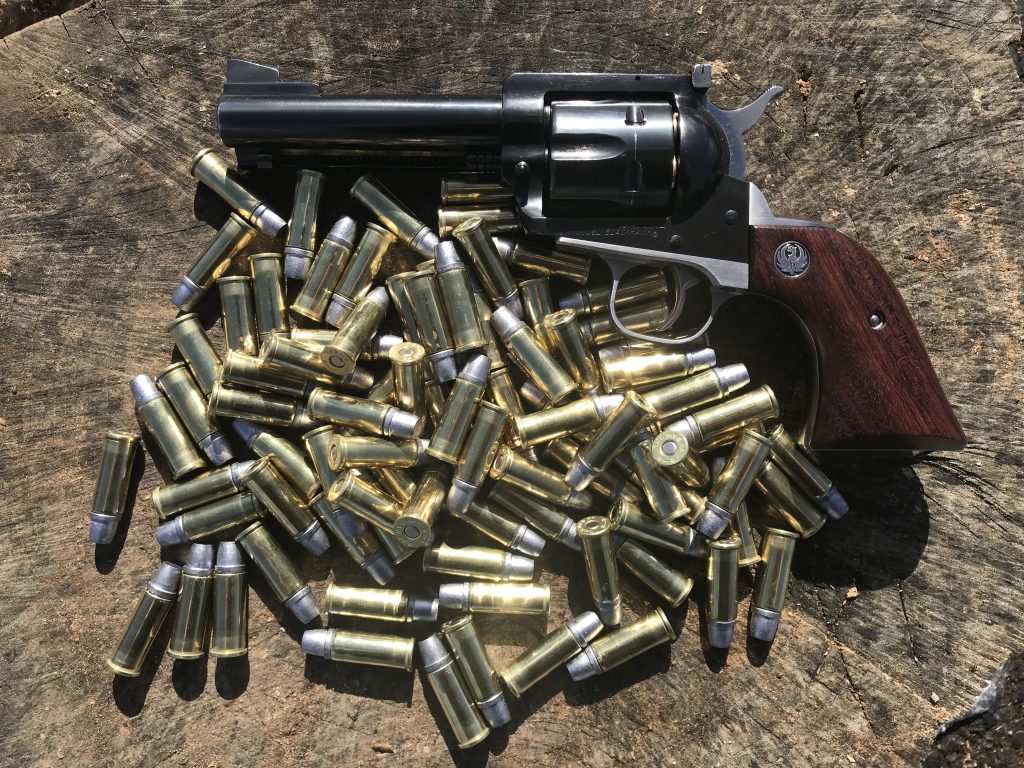
Those guns were so popular, that Ruger decided to offer them as a regular catalog item for a few years, and my gun is one of those. Now discontinued in 44 Special, Ruger has offered other chamberings on their Flattop frame.
I came across my gun used but in excellent condition. It didn’t hardly have a turn ring on the cylinder, let alone any holster wear. The grip frame on the New Model Flattops are of the XR3 size, which is sized very closely to the Colt SAA. My gun also had Eagle Brand American Elk grip panels on it. I tried the gun in that configuration a while, but my hand was bunched no matter how much I wanted to love those beautiful grips.
So after hemming around a while, I decided to sell those fancy grips, and the grip frame, and install a stainless XR3-RED grip frame. I like the little bit of extra room that the XR3-RED grip frame offers. (RED stands for redesigned in case you didn’t know.) I had originally planned to have the steel XR3 grip frame hard chromed for a two-tone look, but since I was going to change the grip frame anyway, it was not only easier, but preferable to use a stainless grip frame.
I ordered the correct grip frame new from MidwayUSA. I researched what was involved with the fitting a grip frame and felt confident I could handle it. I disassembled the gun and then repeatedly assembled the grip frame and frame together to check, while filing, and then sanding the grip frame to get it flush, until finally it was where I wanted it to be. I must have took the grip frame off and put it back on 40-50 times. But I wanted it to be right, and that’s the surest way to not make a mistake. I started with a file, then with sandpaper of various grits on a wooden backer, finishing with 400 grit. Then using a green scotchbrite pad I gave the grip frame a uniform brushed finish. I must say it turned out pretty darn good.
I also changed the hammer to a blued Blackhawk hammer I had for a spare. The original hammer’s base was proud of the ears more than I wanted. The hammer I installed was an older one, that has a smaller base, which allowed me to fit the ears to match. My gun had an internal lock mechanism too, and when I changed the grip frame I did away with it, converting to a standard hammer strut and mainspring seat. I also replaced the factory 17 pound mainspring with a standard 23 pound Blackhawk mainspring. My gun weighs 41 ounces after this conversion.
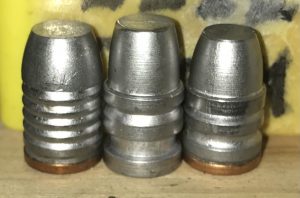
I have carried the gun nearly 2 years non-stop since then. I of course shoot it a fair amount too. My favorite loads are in the standard 44 Special range. Right now, those consist of one of 3 main bullets, Ranch Dog’s TLC-265-RF made by Lee, RCBS’ 44-240-SWC, and RCBS’ 44-250-K. The latter being RCBS’ Keith variety.
I’m still testing loads and experimenting, sometimes working with loads that are higher pressure than the SAAMI MAP of 15,500 psi, since my gun can handle up to 25,000 psi. However, I much prefer the lighter recoil of standard pressure loads for daily usage.
So far, the RCBS 44-250-K over 4.8 grains Bullseye has proven a winner for an everyday plinking and general purpose load, truly a Special level load I also use that charge with the Lee Ranchdog bullet to good success. The other load I really like is also a mild load consisting of 5.5 grains Unique with RCBS’ 44-240-SWC. That load has given me sub 1″ groups at 20 yards when I can do my part. Of course, each gun is different and each loader is different, so please consult your loading manual even for mild loads like these. No one is perfect, and I could make a typo, so double check!
One of the things you might think, is, this guy is nuts for carrying a single action revolver daily. You wouldn’t be far off either. But beside that point, I had previously been carrying one of various semi-autos, but always found myself shooting my single actions at the range and neglecting the others. I am also intimately familiar with and extremely comfortable with single actions. They are so natural to me that they are like an extension of my own body. So, why fight it? Why force myself to practice with a gun I don’t love? And don’t get me wrong, I like them all, Glocks, 1911s, Lugers, Smith and Wesson double actions, but I always have found myself gravitating towards the single actions. When I shoot for fun, it’s a Ruger Single Six, and when I hunt with a handgun, it is with a Blackhawk. So, I finally ordered a good holster and just started carrying my favorite type of gun all the time.
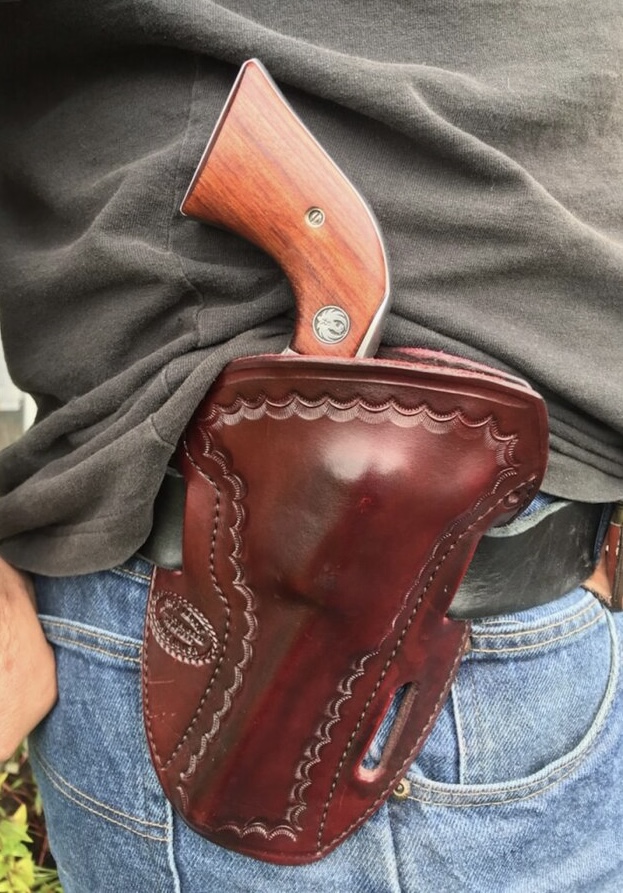
That holster is a Simply Rugged Sourdough Pancake by Rob Leahy. Mine is in Oxblood color with border stamping and optional inside the waistband tabs. I thought I had it made when I carried a 1911 in a Richie Hide-A-Way IWB holster, and at the time, that was the most comfortable combo I had tried. But the Sourdough Pancake holster beats that, and it beats everything else I tried before that. Both inside and outside the waistband, it is the most comfortable rig I’ve ever strapped on. Not to mention, it looks darn nice too.
So, that’s it. Thanks to John Taffin’s influence and to Rob Leahy’s fine gunleather, I both love and carry a two-tone single action sixgun.

